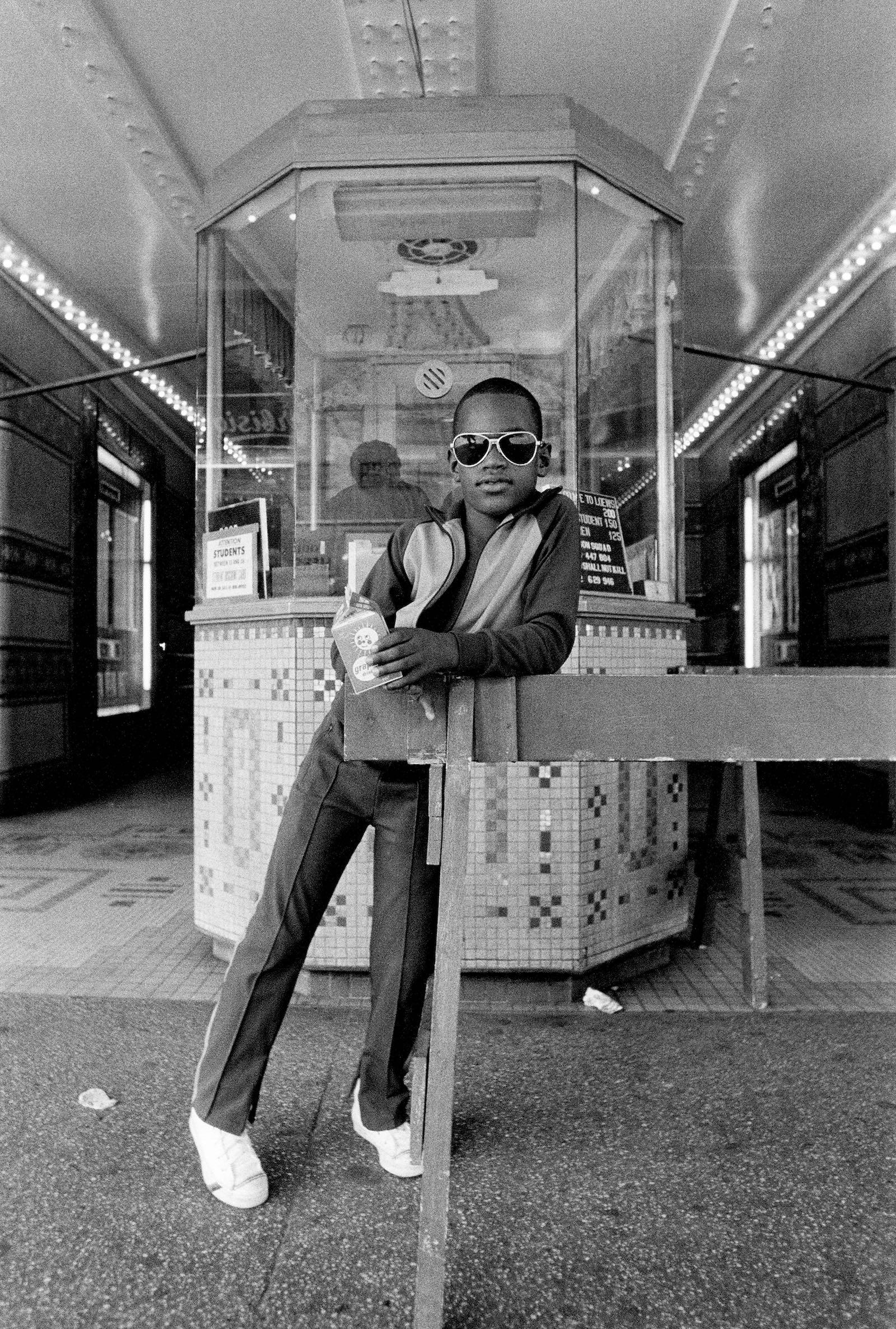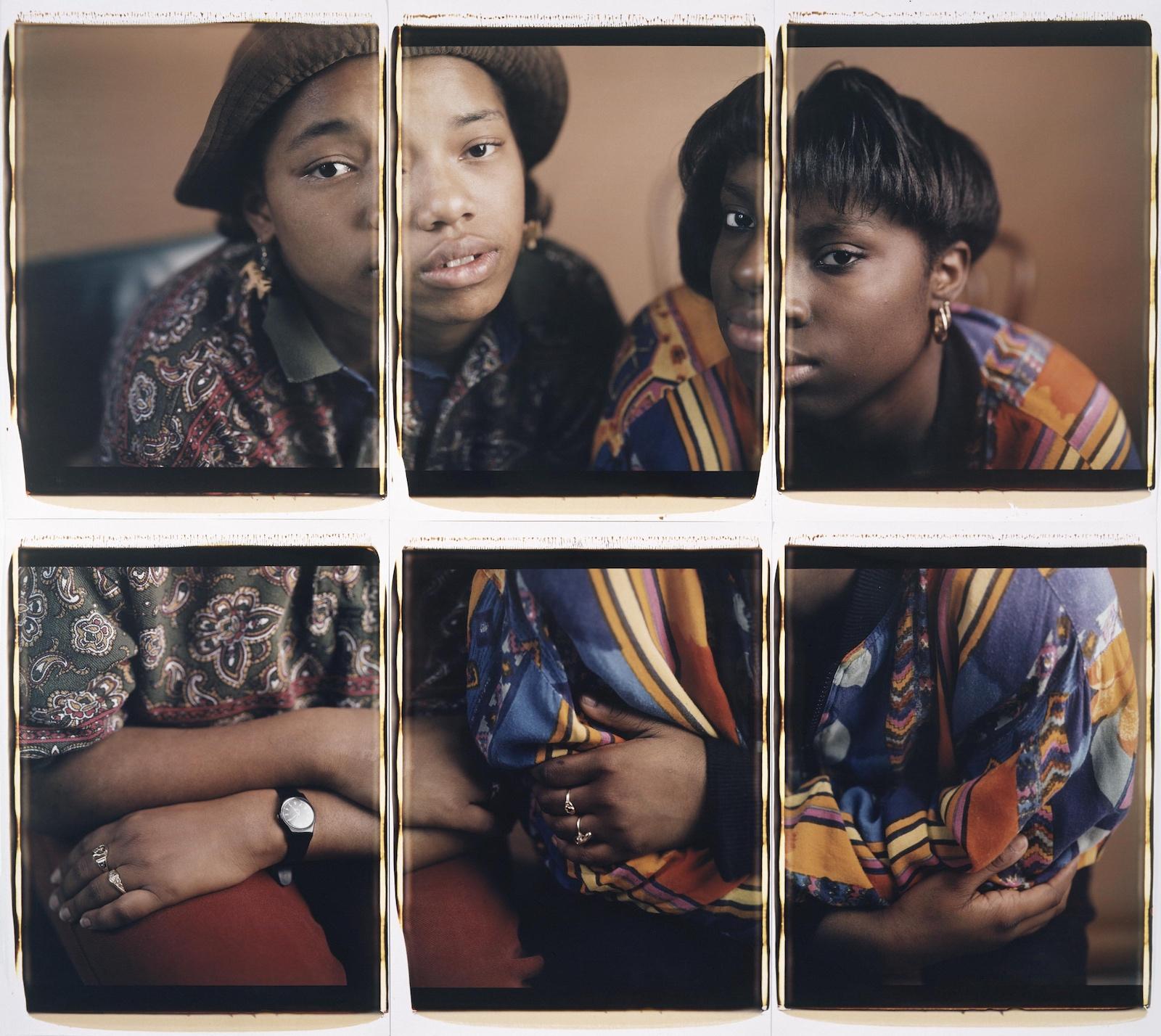Created from 1975 to 1979, Bey’s first series, Harlem U.S.A. presents complex, intimate depictions of the neighborhood’s residents situated within the surrounding cityscape. Born and raised in Queens, Bey was drawn to Harlem both as the site of his parent’s meeting and home to many friends and family as well as a symbol of and wellspring for Black American culture. Described by the artist as a sort of homecoming, the series debuted at the Studio Museum in Harlem in 1979. Bey revisits the neighborhood nearly forty years later in his series Harlem Redux, a wistful and elegiac look at the community’s recent, rapid transformation and gentrification. Made from 2014-2017 using a new medium format camera, these larger color photographs address the neighborhood’s shifting topography, population, and daily rhythms.
Harlem U.S.A was made with a 35mm camera and wide-angle lens, and Bey continued to use that same camera for much of the 1980s. During his 1985 residency at Light Work in Syracuse, NY, Bey continued to push the possibilities of this format, exploring new ways to make use of shadow and light to help define a dynamic composition.
In 1988, Bey began working with a larger, and more conspicuous, tripod-mounted 4-x-5-inch format camera. Seeking a more equitable, reciprocal relationship with his sitters, Bey approached his subjects openly, creating a series of more formal “street portraits” in areas such as Brooklyn and Washington, DC. By using Polaroid Type-55 film, Bey was able to produce instant pictures that he gave to the sitters, as well as negatives that he later used to make large-scale prints.
In 1991, Bey transitioned to the studio and began using the 20-x-24-inch Polaroid View Camera to capture his subjects. While cumbersome in size, the camera allowed for sustained engagement with his sitters and the ability to orchestrate all aspects of the image. With this new format, Bey made a series of portraits first of his artist friends and later youth whom he met through residencies at high schools and museums around the country. As the project evolved, Bey also experimented with multi-panel Polaroid portraiture, creating a series of large-scale works that render his subjects using several individual frames. In Class Pictures (2001-2006), Bey began making large-scale color portraits of high school students during a residency at the Smart Museum of Art in Chicago. Each portrait is accompanied by text that he invited the students to contribute furthering his interest in creating more collaborative relationships with his sitters. Bey expanded the series during residencies around the country from 2003 to 2006.































